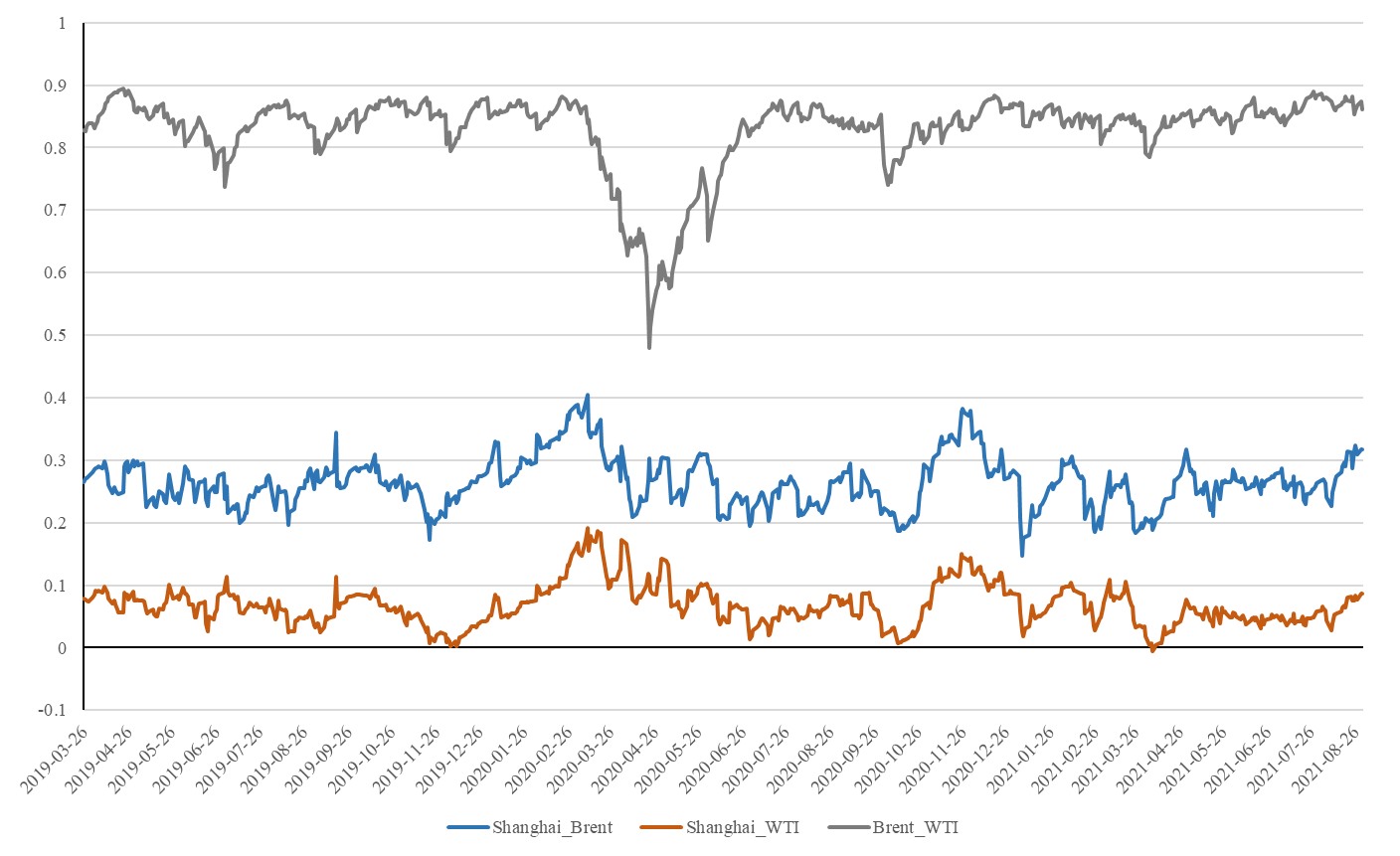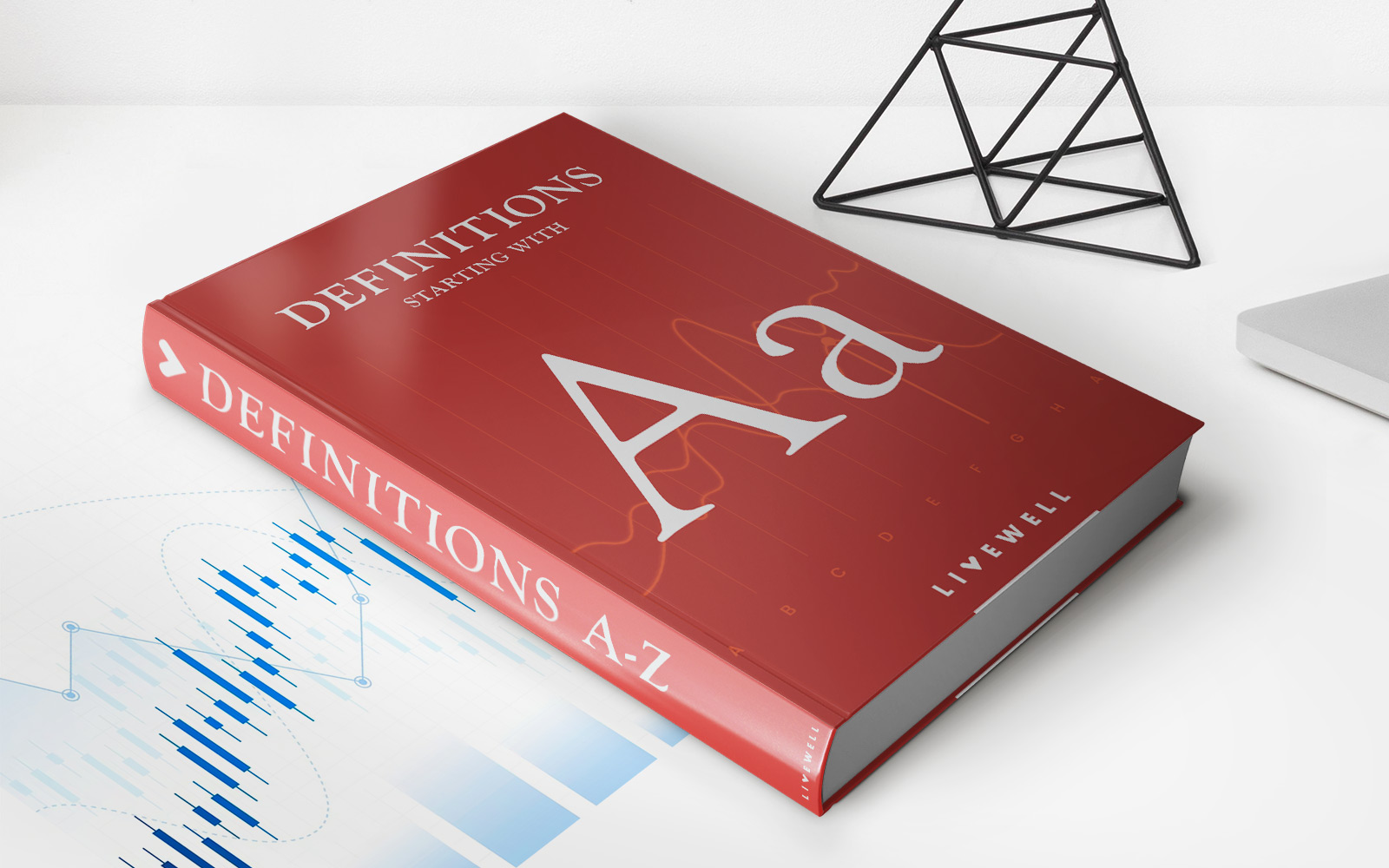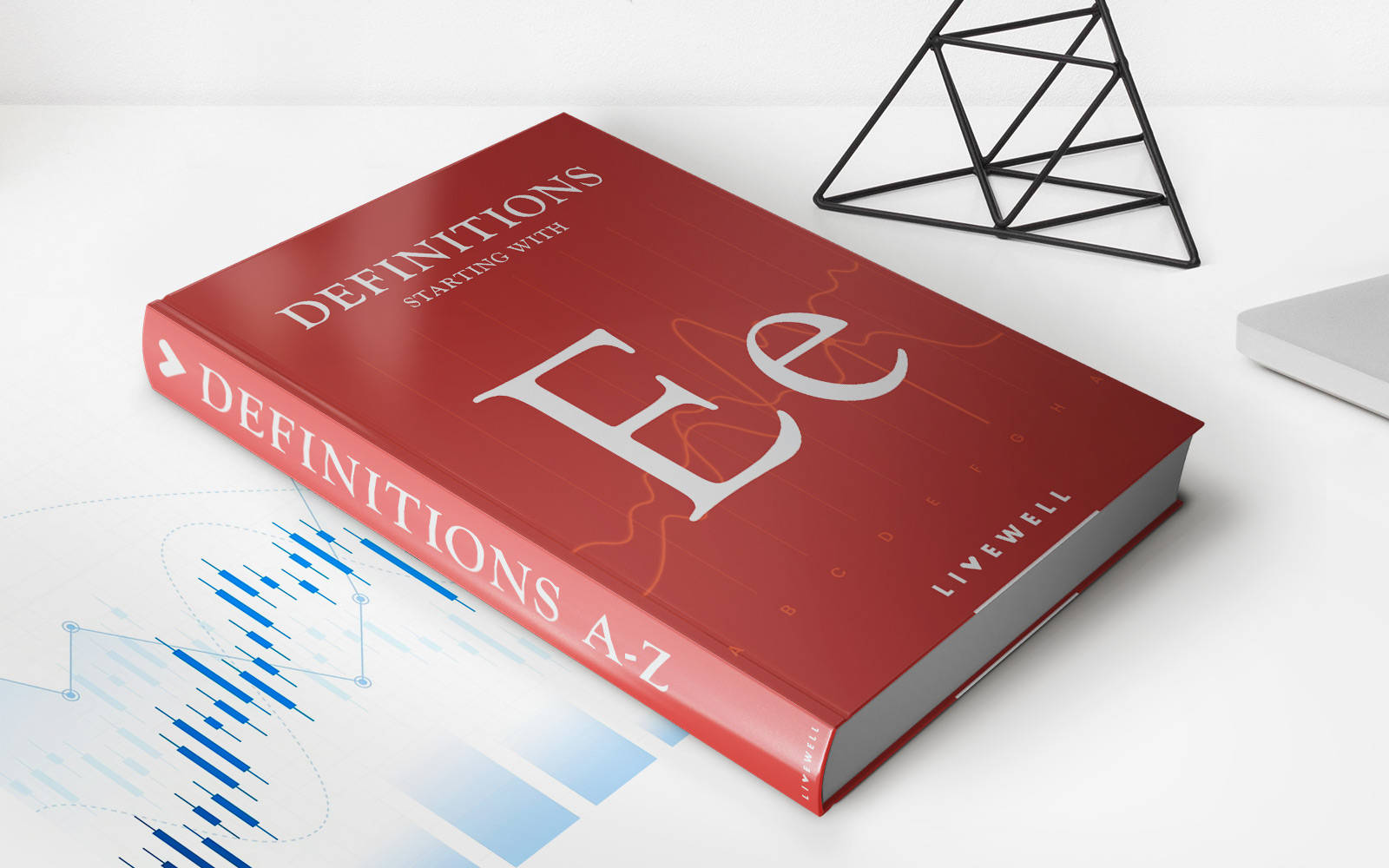Home>Finance>How To Calculate The Return On Futures Contracts


Finance
How To Calculate The Return On Futures Contracts
Published: December 24, 2023
Learn how to calculate the return on futures contracts in the field of finance and gain insight into the profitability of your investments.
(Many of the links in this article redirect to a specific reviewed product. Your purchase of these products through affiliate links helps to generate commission for LiveWell, at no extra cost. Learn more)
Table of Contents
Introduction
Welcome to the world of futures contracts! If you’re interested in investing or trading in the financial markets, futures contracts can be a valuable tool to consider. These financial instruments allow traders and investors to speculate or hedge against price fluctuations in various assets, including commodities, currencies, and stock indices.
One crucial aspect of futures contracts is understanding the potential return they can generate. The return on futures contracts is a measure of the profit or loss that an investor can expect from their investment. Calculating this return is essential as it helps investors assess the performance and profitability of their futures trading strategies.
In this article, we will explore the components and methods involved in calculating the return on futures contracts. We will also discuss how to interpret these returns, allowing you to make informed decisions in your futures trading journey.
Whether you’re a seasoned trader or a beginner, having a solid understanding of the return on futures contracts will empower you to make strategic investment decisions. So, let’s dive in and explore this fascinating world of futures contract returns!
Understanding Futures Contracts
Before delving into the calculation of the return on futures contracts, it’s important to have a clear understanding of what futures contracts are and how they work.
A futures contract is a legally binding agreement between two parties to buy or sell a particular asset at a predetermined price and date in the future. These assets can be commodities like oil, gold, or agricultural products, financial instruments like stock indexes or currencies, or even intangible assets like interest rates or weather conditions.
One key aspect of futures contracts is that they are standardized in terms of their quantity, quality, and delivery date. This standardization allows for ease of trading on exchanges, where buyers and sellers can enter into agreements without the need for direct negotiation.
Investors use futures contracts for various purposes, including speculation and hedging. Speculators aim to profit from price fluctuations in the underlying asset, while hedgers use futures contracts to protect themselves against undesirable price movements.
For example, let’s consider a corn farmer who wants to protect themselves against a potential drop in corn prices. They can enter into a futures contract to sell corn at a predetermined price, effectively locking in a sales price and safeguarding against market volatility.
It’s important to note that futures trading involves a high level of risk, given the leverage and potential for substantial gains or losses. Therefore, understanding how to calculate the return on futures contracts is crucial to assess the profitability of your trading strategies and make informed decisions.
Now that we have a basic understanding of futures contracts, let’s explore the components of the return on futures contracts in the next section.
Components of Return on Futures Contracts
Calculating the return on futures contracts involves considering several components. Understanding these components will enable you to accurately measure the profitability of your futures trading activities. Let’s take a closer look at these key components:
- Determining Initial Investment: The first step in calculating the return on futures contracts is determining the initial investment. This includes the margin requirement, which is the amount of capital you need to put up to initiate a futures position. The margin requirement varies depending on the exchange and the asset being traded.
- Calculating Profit or Loss: Once you’ve entered into a futures contract, monitoring the changes in the contract’s value is essential. To calculate the profit or loss, you need to compare the initial contract price with the current market price of the contract. If the market price is higher than the initial price, you will have a profit, and if it is lower, you will have a loss.
- Accounting for Transaction Costs: In addition to the profit or loss from the price movement, it’s important to consider transaction costs. These costs can include brokerage fees, exchange fees, and any other expenses associated with the execution of the futures contract. Deducting these transaction costs from your profit or adding them to your loss will give you a more accurate measure of your return.
- Adjusting for Margin Requirements: As futures contracts are highly leveraged instruments, margin calls may occur if the value of the contract moves against your position. When a margin call is triggered, you may be required to deposit additional funds into your margin account to maintain the required margin level. Adjusting for any margin calls or additional margin deposits is crucial in calculating the true return on your investment.
By taking into account these components, you can derive an accurate calculation of the return on futures contracts. The next section will explore the step-by-step process of calculating the return on investment (ROI) for futures contracts.
Determining Initial Investment
When it comes to calculating the return on futures contracts, the first step is determining the initial investment. This involves understanding the concept of margin requirements and considering the capital required to initiate a futures position.
Margin requirements are the minimum amount of capital that traders are required to deposit with their broker to open a futures contract. It serves as a form of collateral to cover any potential losses that may occur during the trading period. The margin requirements vary depending on the exchange, the specific futures contract, and the account type.
Margin requirements are typically expressed as a percentage of the total contract value. For example, if the margin requirement for a futures contract is 5%, and the total contract value is $10,000, you would need to deposit $500 as the initial investment.
It’s important to note that while margin requirements provide leverage and allow traders to control a larger position with a smaller initial capital outlay, they also amplify the potential for both gains and losses. Therefore, it’s essential to carefully assess the risks involved and ensure you have the necessary capital to meet margin requirements.
When determining the initial investment, it’s crucial not to overlook the transaction costs associated with opening a futures contract. These costs may include brokerage fees, exchange fees, and other charges. Be sure to account for these costs when calculating your initial investment.
By accurately determining the initial investment, you lay the foundation for calculating the return on futures contracts. The next section will explore the step-by-step process of calculating the profit or loss from futures trading.
Calculating Profit or Loss
Once you have determined the initial investment and opened a futures contract, the next step in calculating the return on futures contracts is determining the profit or loss from your trading activity. This calculation involves comparing the initial contract price with the current market price of the contract.
To calculate the profit or loss on a futures contract, you need to factor in the price movement of the underlying asset. For example, if you bought a crude oil futures contract at $50 per barrel and the current market price is $55 per barrel, you would be experiencing a profit. Conversely, if the market price dropped to $45 per barrel, you would have incurred a loss.
The profit or loss calculation is determined by subtracting the initial contract price from the current market price and multiplying it by the contract size. The contract size represents the quantity of the underlying asset specified in the futures contract.
For instance, if you are trading a gold futures contract with a contract size of 100 ounces and bought it at $1,800 per ounce, and the current market price is $1,850 per ounce, the profit calculation would be:
Profit = (Current Market Price – Initial Contract Price) * Contract Size
= ($1,850 – $1,800) * 100
= $5,000
If the current market price had been lower than the initial contract price, resulting in a loss, the formula would be the same, but the result would be negative.
It’s important to note that the profit or loss calculation does not take into account any transaction costs associated with executing the futures contract. These costs, including brokerage fees, exchange fees, and other charges, will be accounted for separately in the overall return calculation, as discussed in previous sections.
By accurately calculating the profit or loss from your futures contract, you can assess the financial outcome of your trading activity. The next section will address the significance of accounting for transaction costs in determining the true return on futures contracts.
Accounting for Transaction Costs
When calculating the return on futures contracts, it’s crucial to account for transaction costs associated with executing the trades. These costs can have a significant impact on the overall profitability of your futures trading activities.
Transaction costs in futures trading include brokerage fees, exchange fees, clearing fees, and any other expenses incurred during the buying or selling of futures contracts. These costs can vary depending on the brokerage firm, exchange, and the specific contract being traded.
When determining the return on futures contracts, transaction costs are deducted from profits or added to losses to provide a more accurate picture of the net return. This ensures that the calculation reflects the true financial outcome of your trading activities.
For example, let’s say you made a profit of $1,000 from a futures contract, but the transaction costs amounted to $100. In this case, the net profit after accounting for transaction costs would be $900.
Similarly, if you incurred a loss of $500 on a futures contract, but the transaction costs were $50, the net loss after accounting for transaction costs would be $550.
It’s important to be mindful of transaction costs when evaluating the profitability of your futures trading. Analyzing these costs will help you make informed decisions in selecting the most cost-effective brokerage firm or exchange for your trading activities.
Additionally, closely monitoring transaction costs can help you identify areas for potential improvement in your trading strategy. By minimizing transaction costs, you can enhance your overall return on futures contracts.
Now that we have discussed the significance of accounting for transaction costs, the next section will explore the importance of adjusting for margin requirements in calculating the true return on investment.
Adjusting for Margin Requirements
When calculating the return on futures contracts, it’s essential to account for margin requirements and any adjustments made during the trading period. This ensures a more accurate representation of the true return on investment.
Margin requirements play a crucial role in futures trading as they determine the initial capital needed to enter a position and maintain it. If the value of the futures contract moves against your position, you may be required to deposit additional funds into your margin account to meet the margin requirements set by the exchange.
Adjusting for margin requirements involves considering any additional capital deposits made during the trading period. If you made margin deposits, these should be included in the calculation of the overall return on futures contracts.
For example, let’s say you opened a futures contract with an initial investment of $10,000 and had to make an additional margin deposit of $2,000 due to a margin call. The total investment in this case would be $12,000.
Similarly, if you had excess margin in your account and withdrew funds, the return calculation should reflect the reduction in capital. Adjusting for these changes in margin requirements allows for a more accurate assessment of the profitability of your futures trading activities.
By incorporating adjustments for margin requirements, you gain a better understanding of the true return on investment and the impact of leveraging provided by futures contracts.
It’s important to note that neglecting to account for margin requirements and their adjustments can distort the calculation of returns and may lead to inaccurate assessments of trading performance.
Now that we have seen how to adjust for margin requirements, the next section will dive into the step-by-step process of calculating the return on investment (ROI) for futures contracts.
Calculating Return on Investment (ROI)
Calculating the return on investment (ROI) for futures contracts involves combining the various components we have discussed. By considering the initial investment, profit or loss, transaction costs, and adjustments for margin requirements, you can derive a comprehensive calculation of your ROI.
The formula for calculating ROI is:
ROI = (Profit or Loss – Transaction Costs – Margin Adjustments) / Initial Investment
Let’s break down each component of the formula:
- Profit or Loss: Determine the profit or loss from the futures contract by subtracting the initial contract price from the current market price, as discussed earlier in the article.
- Transaction Costs: Account for any transaction costs incurred during the trading process, such as brokerage fees, exchange fees, and other charges.
- Margin Adjustments: Include any adjustments made to margin requirements during the trading period, such as additional margin deposits or withdrawals.
- Initial Investment: Determine the initial investment required to open the futures contract, including the margin requirement and any transaction costs.
By plugging in the values for each component into the ROI formula, you can calculate the return on investment for your futures contract. The ROI will be expressed as a percentage, allowing for easy comparison and evaluation of different trading strategies and investment choices.
For example, if you had an initial investment of $10,000, made a profit of $2,000, incurred $500 in transaction costs, and had $1,000 in margin adjustments, the calculation would be:
ROI = ($2,000 – $500 – $1,000) / $10,000 = 0.15 or 15%
A positive ROI indicates a profitable return, while a negative ROI indicates a loss. By calculating the ROI for your futures contracts, you can assess the effectiveness of your trading strategies and identify areas for improvement.
Keep in mind that ROI is just one metric to evaluate your futures trading performance. It should be considered alongside other factors such as risk management, market conditions, and overall investment objectives.
Now that we have explored the calculation of ROI, the next section will discuss the interpretation of return on futures contracts.
Interpreting Return on Futures Contracts
Interpreting the return on futures contracts is crucial for assessing the profitability and success of your trading activities. Understanding the implications of different return values will help you make informed decisions and refine your trading strategies. Here are some key points to consider when interpreting the return on futures contracts:
- Positive Return: A positive return indicates that your futures trading activities have generated a profit. It demonstrates your ability to effectively analyze market trends, make informed decisions, and capitalize on price movements. A higher positive return suggests a higher level of profitability.
- Negative Return: A negative return signifies that your futures trading activities have resulted in a loss. It indicates that your trading strategy may not have been effective or that market conditions were unfavorable. It’s essential to assess the reasons for the negative return and identify areas for improvement.
- Comparison to Benchmark: Comparing the return on futures contracts to a benchmark can provide valuable insights. The benchmark could be a relevant index or the average return achieved by other traders in the same market. If your return exceeds the benchmark, it suggests that your trading strategy is outperforming the market.
- Consistency of Returns: Evaluating the consistency of returns is important. It’s not just about achieving one high return; sustainable profitability is key. Analyze the trend of returns over multiple trades or time periods to identify patterns and assess the reliability of your trading strategy.
- Risk-Adjusted Returns: Consider the level of risk associated with the returns. Some trading strategies may generate high returns, but they also carry higher risks. Understanding the risk-adjusted returns allows you to assess the efficiency and suitability of your trading approach.
- Long-term Impact: The return on futures contracts should be assessed in the context of your long-term investment goals. Some strategies may aim for short-term gains, while others focus on achieving steady returns over a longer duration. Align your return expectations with your overall investment objectives.
Remember that return on futures contracts is just one aspect of assessing the success of your trading strategy. It’s essential to consider other factors such as risk management, market analysis, and overall portfolio performance.
Regularly tracking and evaluating your return on futures contracts will provide insights into your trading performance and help you make data-driven decisions. By understanding and interpreting your returns, you can refine your strategies, adapt to changing market conditions, and strive for greater profitability in your futures trading ventures.
Now that we have explored the interpretation of return on futures contracts, let’s conclude this article by summarizing the key points.
Conclusion
Congratulations! You now have a solid understanding of how to calculate and interpret the return on futures contracts. By considering the components of initial investment, profit or loss, transaction costs, and margin requirements, you can accurately assess the profitability of your futures trading activities.
Remember, calculating the return on futures contracts allows you to evaluate the effectiveness of your trading strategies, make informed decisions, and identify areas for improvement. It’s important to consider other factors such as risk management, market analysis, and long-term investment goals in conjunction with your return calculations.
Interpreting the return on futures contracts involves analyzing positive or negative returns, comparing them to benchmarks, assessing consistency, and evaluating risk-adjusted returns. This comprehensive evaluation will enable you to refine your trading strategies, adapt to market conditions, and strive for sustainable profitability.
Always be mindful of the risks associated with futures trading, as leverage can amplify losses, and market conditions can be unpredictable. Practice disciplined risk management and stay informed about the factors that can impact the value of the underlying asset in your futures contracts.
By continuously monitoring and analyzing your return on futures contracts, you can gain valuable insights into your trading performance and make sound investment decisions. Whether you are a seasoned trader or just starting, learning how to calculate and interpret the return on futures contracts is a valuable skill that can significantly impact your success in the financial markets.
So, put your knowledge to work, refine your strategies, and embark on a rewarding journey in futures trading. Happy trading!














